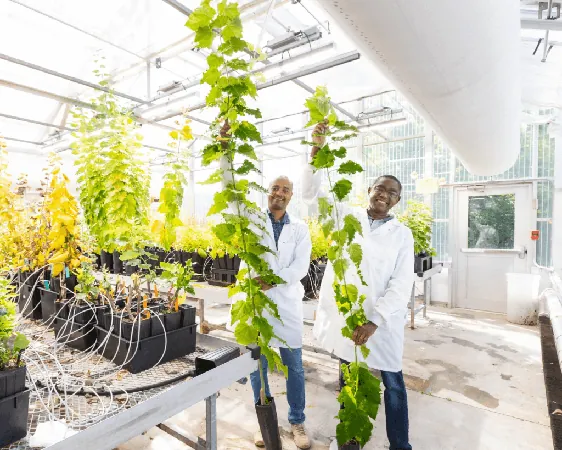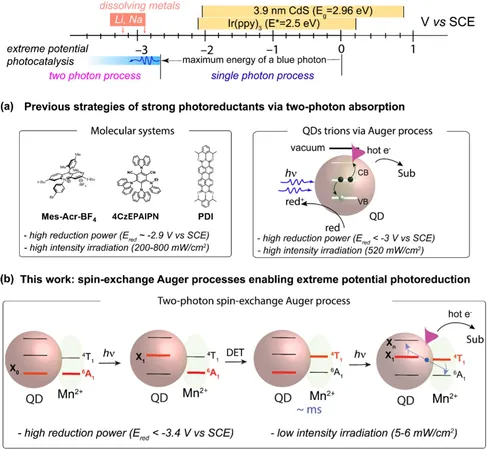
Revolutionary Bioenergy Gene 'Booster' Set to Skyrocket Plant Growth by 30%—Could This Change Agriculture Forever?
2025-01-10
Author: Ming
A groundbreaking genetic discovery is poised to revolutionize agriculture and bioenergy production. Researchers have identified a gene, aptly named 'Booster', in poplar trees that can enhance photosynthesis and growth significantly—by up to 200% in controlled greenhouse environments and a remarkable 30% in real-world field conditions. This innovative finding has far-reaching implications, especially for crops like Arabidopsis, and could lead to enhanced agricultural yields without the need for additional resources.
The Science Behind Booster: A Game-Changer in Plant Biotechnology
A collaborative team from the Department of Energy's Bioenergy Research Centers—including Oak Ridge National Laboratory (ORNL) and the University of Illinois Urbana-Champaign—has made waves with their findings. The gene Booster, extracted from Populus trichocarpa (commonly known as black cottonwood), could be a key player in addressing global food and energy needs. This particular species thrives across diverse climates from Baja California to northern Canada, making it an excellent candidate for biofuels and bioproducts.
Interestingly, Booster is a chimeric gene derived from three different genetic origins, including sequences from bacteria found in the tree’s root system, an ant that cultivates a fungus associated with poplar, and a portion derived from Rubisco—a critical protein in plant chloroplasts responsible for capturing atmospheric carbon dioxide. The unique structure of Booster has evolved over time, suggesting a significant role in the plant's ability to adapt to its environment.
Impressive Experimental Results: Higher Growth and Increased Biomass
In rigorous greenhouse studies, poplar trees engineered to express higher levels of the Booster gene demonstrated astonishing growth, reaching 200% taller than their non-modified counterparts. These genetically enhanced trees exhibited up to 62% more Rubisco, boosting their photosynthetic capacity and net leaf CO2 uptake by approximately 25%. Field experiments revealed that these enhancements persisted outside controlled conditions, with trees growing up to 37% taller and producing 88% more stem volume—a clear increase in biomass with promising implications for sustainable bioenergy.
The application of the Booster gene extended beyond poplars; when introduced to Arabidopsis, results revealed a similar surge in biomass and even an astonishing 50% increase in seed production, hinting at vast potential for improving other crops.
A Sustainable Future: Unlocking the Potential of Bioenergy
The Booster gene holds incredible promise not just for tree growth but for food crops as well. Being identified within C3 plants—a category including staple crops like soybeans, rice, and wheat—the potential for increased yields could play a crucial role in combating global food scarcity and advancing sustainable agricultural practices. "Imagine growing high-yielding, perennial bioenergy crops on marginal lands; this could address the rising demand for liquid biofuels while creating jobs in rural areas," noted Jerry Tuskan, director of CBI.
The implications of this discovery extend far beyond mere enhancements in plant size. Experts believe that improving photosynthetic efficiency could significantly reduce the pressure on land and water resources, ultimately contributing to a more robust bioeconomy.
Next Steps: Field Trials and Broadening Horizons
Researchers are setting their sights on conducting multilocation field trials to further evaluate the Booster gene's effectiveness across diverse conditions. These trials aim to solidify the technology's predictive power on a larger scale and unlock the full potential of bioenergy crops.
This discovery emphasizes the dynamic nature of genetic research, challenging preconceived notions regarding photosynthesis. As Stephen Long, a leading authority in plant photosynthesis put it, “This could be a game-changer that boosts plant productivity and photosynthesis significantly.”
In a world grappling with the dual challenges of food scarcity and energy demands, the implications of the Booster gene could be monumental, paving the way for innovations in how we produce food and energy alike. With further research and testing, we may very well be on the cusp of agricultural revolution.




 Brasil (PT)
Brasil (PT)
 Canada (EN)
Canada (EN)
 Chile (ES)
Chile (ES)
 Česko (CS)
Česko (CS)
 대한민국 (KO)
대한민국 (KO)
 España (ES)
España (ES)
 France (FR)
France (FR)
 Hong Kong (EN)
Hong Kong (EN)
 Italia (IT)
Italia (IT)
 日本 (JA)
日本 (JA)
 Magyarország (HU)
Magyarország (HU)
 Norge (NO)
Norge (NO)
 Polska (PL)
Polska (PL)
 Schweiz (DE)
Schweiz (DE)
 Singapore (EN)
Singapore (EN)
 Sverige (SV)
Sverige (SV)
 Suomi (FI)
Suomi (FI)
 Türkiye (TR)
Türkiye (TR)
 الإمارات العربية المتحدة (AR)
الإمارات العربية المتحدة (AR)